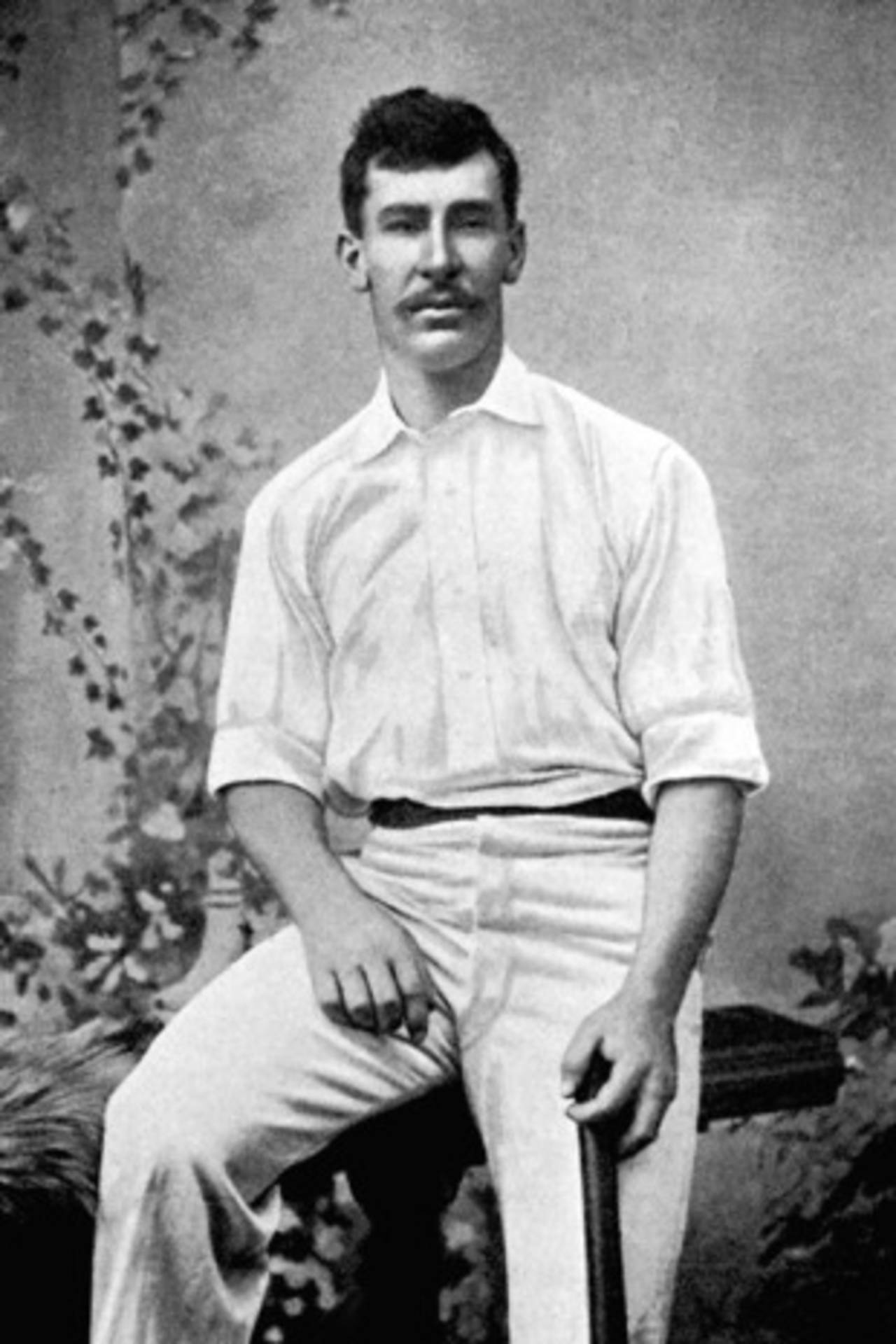Albert Trott's mighty hit
A look back at a 111-year-old record: one of the biggest and most famous shots played at Lord's
Martin Williamson
19-Jun-2010

Albert Trott: "He had a heart of gold and was as simple as a child" • PA Photos
Changing attitudes and constantly improving technology mean that while big hitting was once the domain of a handful of players - Gilbert Jessop, Arthur Wellard and Ian Botham for example - it is now a required element of most batsmen's arsenals. Despite that, one hitting record has eluded players for almost 111 years - clearing the Lord's pavilion.
Opened in 1890, the iconic building is permanently in the batsmen's firing line, but only one has cleared it properly - Albert Trott in the summer of 1899. Many have tried and a few came close. Earlier this month West Indian Kieron Pollard on his Somerset debut clubbed Middlesex's Shaun Udal into the top tier; in 1977 I was present at the Gillette Cup final when Glamorgan's Mike Llewellyn hit John Emburey into the guttering in front of the north turret. But Trott's place in cricket history remains.
Trott had already played for Australia when, overlooked by selectors for the 1896 tour, he travelled to England under his own steam (although on the ship carrying the Australians, who were captained by his brother) and set about qualifying for Middlesex. By 1898 he was playing county cricket and that winter played two Tests for England in South Africa.
Renowned as a big hitter, he wielded a 3lb bat in an era where the norm was around 2lb 3ozs and anything over 2lb 8ozs was deemed a club. He was also a very good bowler and in 1899 took 237 wickets and scored 1175 runs.
In May that year he had already made a mark when he struck two huge sixes into the Lord's pavilion in a Championship match against Sussex, one of them, off Fred Tate, ricocheting off the ironwork at the top of one of the turrets. It is possible that was an even bigger strike than the one the following month.
When the Australians came to Lord's on July 31, MCC put out a strong side that included WG Grace and KS Ranjitsinhji as well as Trott. A crowd of around 10,000 basked in the sunshine as MCC reached 123 for 4 shortly after lunch and Trott marched to the middle.
He took no time to play himself in and immediately set about the bowlers, adding 65 in 45 minutes with the more circumspect Ranjitsinhji. His big hit came off Monty Noble, who was bowling seamers and who had already been hammered onto the middle balcony of the pavilion. "He found the range with a couple of sighting shots," recalled Sir Pelham Warner who was in the front of the pavilion at the time. "And then came the historic hit."
The stroke was a violent drive that soared up and over the roof of the pavilion. Some reports say it landed on the far slope of the roof, struck a chimney pot and landed in the Grove End Road garden of Philip Need, the dressing-room attendant, behind the building. Onlookers said Trott stepped back, shaded his eyes with his hand and admired his handiwork as the ball disappeared.
"I was not very sure about it; and the next thing I saw was the ball looking like a pea in the air"Trott on his shot
"Noble was bowling, and sending the balls down in pretty good style, and at last I struck at one," Trott told Boys' Own a few years later. "I was not very sure about it; and the next thing I saw was the ball looking like a pea in the air, and I learned then that it had just touched a chimney and nearly gone out of the ground."
WN Roe wrote to the Daily Telegraph in 1937 to say he was on the top tier and "the ball came right over our heads … Trott got only four for this hit as the ball hit the racquet courts behind and in those days a ball had to go out of the ground to score six."
Noble got him out almost immediately as he top edged an expansive swipe to third man, but Trott's day was not yet over. In an hour's batting during the evening the Australians slipped to 54 for 4 in reply to MCC's 258, Trott taking three wickets, including the prized one of Victor Trumper.
The following year playing for MCC against Cambridge University he again twice found the top balcony, and in 1902 he landed a ball high into the Mound Stand with a slashed drive over cover, a massive carry for that kind of shot.
It is often said Trott's big hit ruined his career as he sought to repeat the feat, but there is no evidence of that. It happened early in his county career and he continued to perform impressively.
But sadly, Trott's career as a whole was soon on the slide. He loved beer as much as cricket, gambled heavily, and as his body began to pay for the excesses, his abilities waned. At a time when many players went on into their forties, he retired and turned briefly to umpiring, but even that proved beyond him.
A day before the 15th anniversary of his momentous hit he shot himself in a one-bedroom rented flat, leaving almost nothing but memories. He was 41 but looked years older. "He had a heart of gold," wrote Warner, "and was as simple as a child. He was one of those people who compel attention."
Is there an incident from the past you would like to know more about? Email us with your comments and suggestions.
Martin Williamson is executive editor of Cricinfo and managing editor of ESPN Digital Media in Europe, the Middle East and Africa